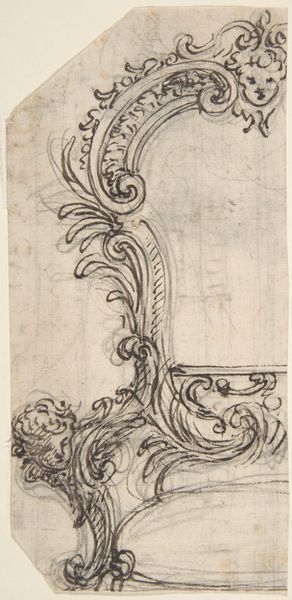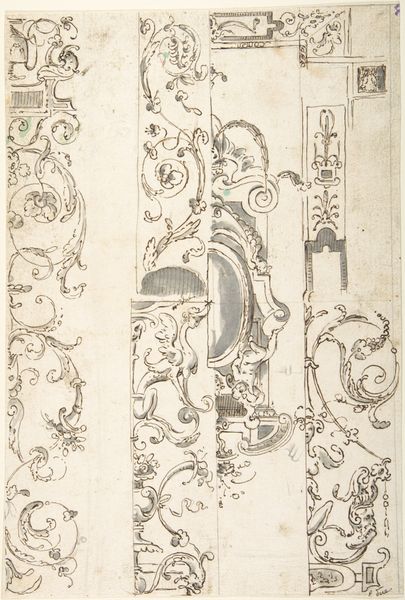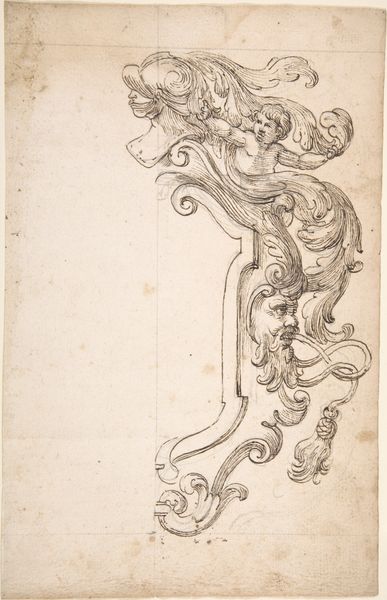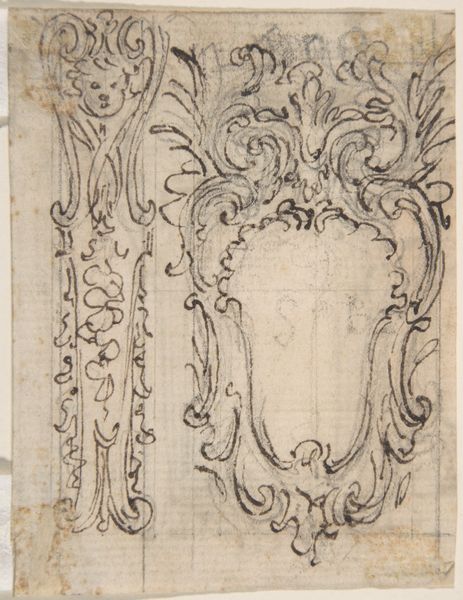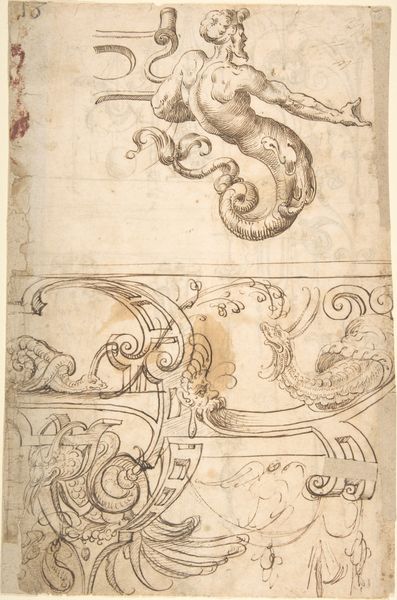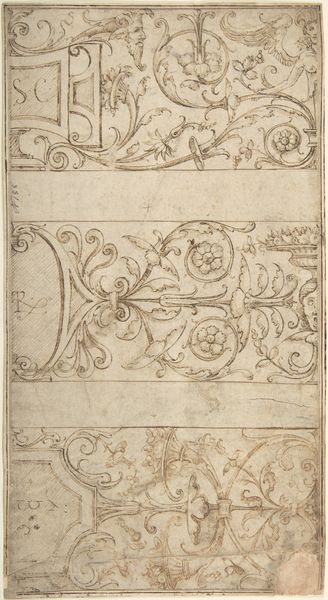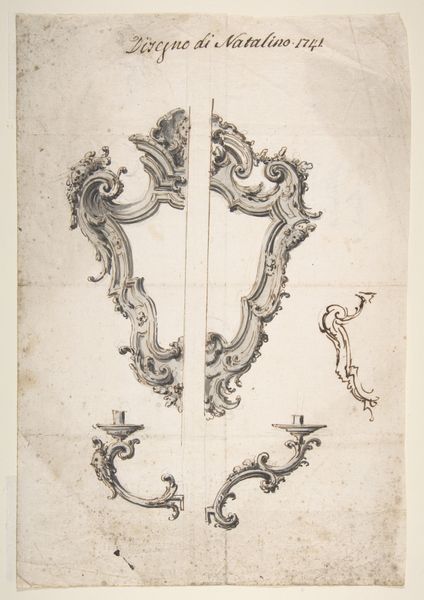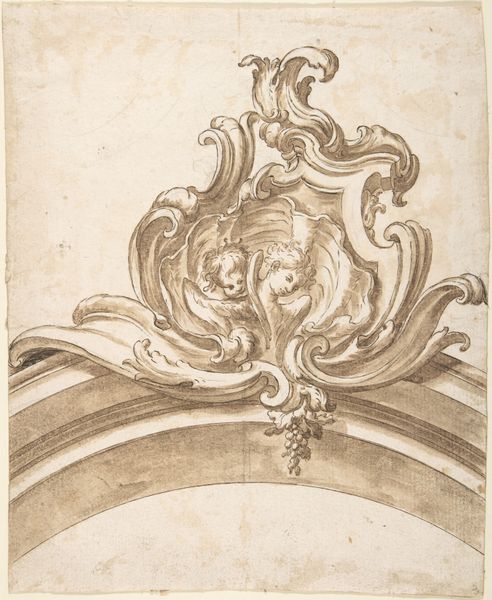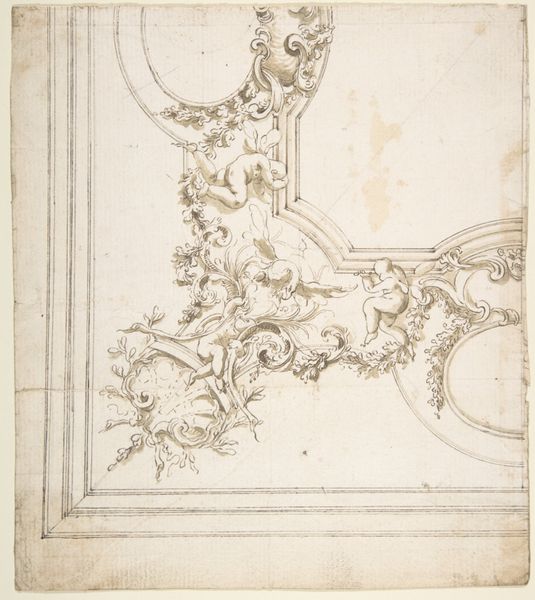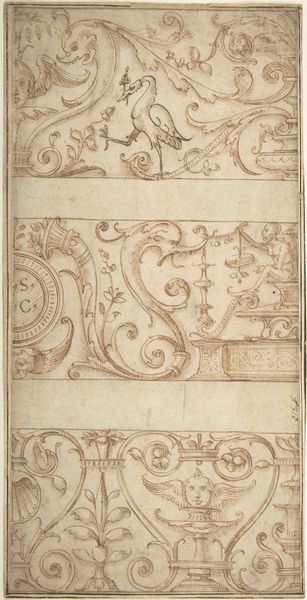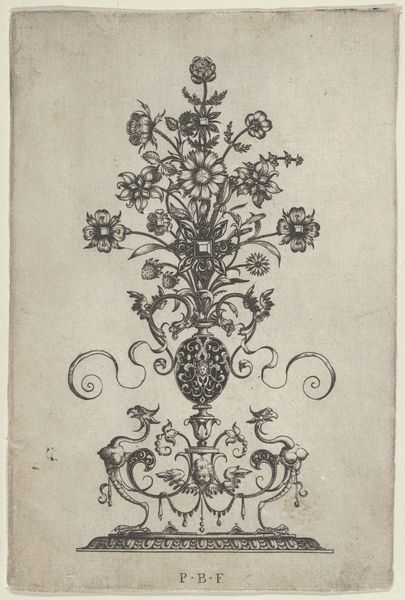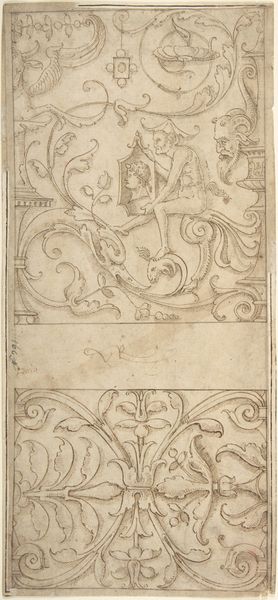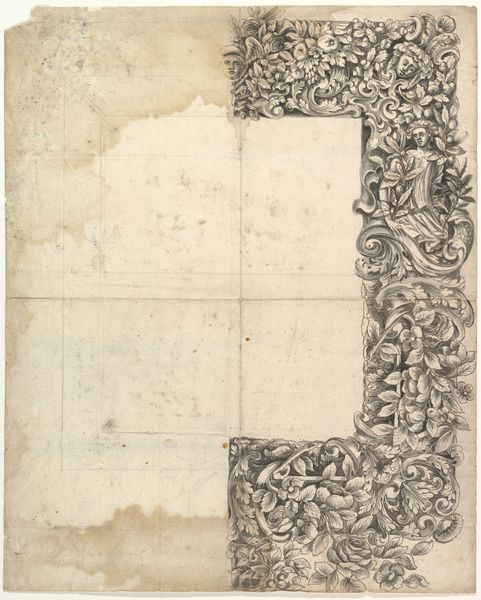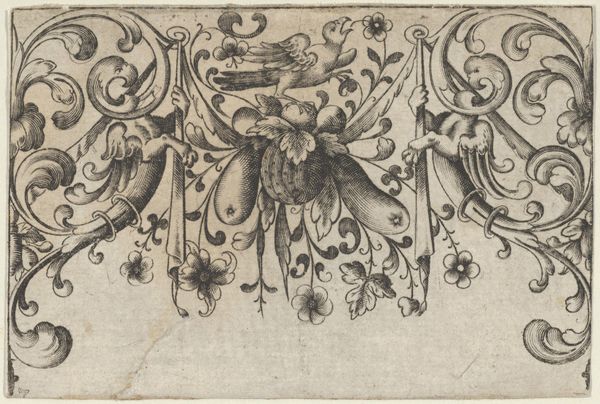
Rear Wheel and Part of the Carved Wooden Structure of a Carriage 18th century
0:00
0:00
drawing, print, ink
#
drawing
#
baroque
#
ink painting
# print
#
ink
#
geometric
#
line
Dimensions: sheet: 10 3/8 x 7 1/2 in. (26.4 x 19.1 cm)
Copyright: Public Domain
Curator: Here we have an 18th-century drawing titled "Rear Wheel and Part of the Carved Wooden Structure of a Carriage," currently residing at The Met. It’s rendered in ink, showcasing a rear wheel adjacent to some intricately carved woodwork. What’s your immediate reaction? Editor: It feels opulent, almost aggressively so. The baroque detailing looks so excessive, given it’s just a carriage wheel. I find myself wondering about the social statement of such elaborate transportation. Curator: Exactly. The Baroque period was all about projecting power and wealth. Think of Louis XIV and Versailles. This carriage, no doubt, was meant to impress. The carved wooden structure is an integral part of that spectacle. The artist is sadly unknown, so the intentions remain more enigmatic than with works attributed to famous names of the period. Editor: Enigmatic, yes, but still potent. That contrast of light and shadow achieved with simple ink washes creates an undeniably rich visual experience, almost romanticizing what is, at its core, a functional object. This excess feels exploitative when considering it's from an era defined by vast wealth disparities. Curator: A relevant point, framing art as a reflection of societal imbalances. Luxury wasn’t just an aesthetic preference; it was a political tool. Displays of grandeur reinforced hierarchical structures. The carving itself would’ve been immensely time-consuming, requiring specialized labor. Editor: And consider who owned it! What’s really emphasized is not just wealth, but access. Owning a lavish carriage also suggests an ability to navigate social landscapes inaccessible to most of the population. This connects directly to political influence, creating a circular, self-sustaining power structure. Curator: So, what this drawing preserves for us is not just a depiction of craftsmanship but a visual record of class distinction. We see the carriage itself became a medium for conveying social status. Editor: Precisely. Art, in this context, is never neutral; it’s enmeshed within systems of privilege, a tangible artifact reflecting who holds power. Understanding how art reflects historical inequities enriches our interpretation of it. Curator: Thinking of how the Met exhibits the drawing is interesting too, because context is so vital, here the drawing transcends being just a lovely ink rendering to reveal important societal contexts of the Baroque period. Editor: A potent image for reflecting on that history indeed, let’s hold onto that in examining future pieces.
Comments
No comments
Be the first to comment and join the conversation on the ultimate creative platform.
